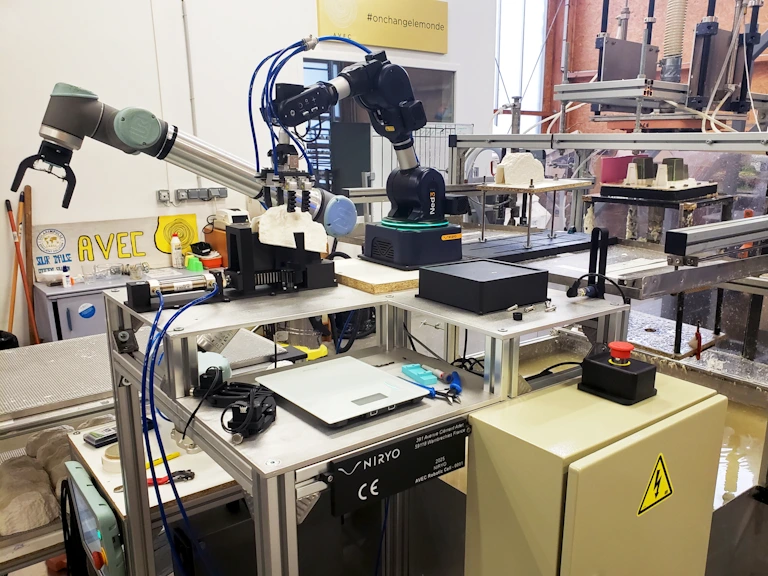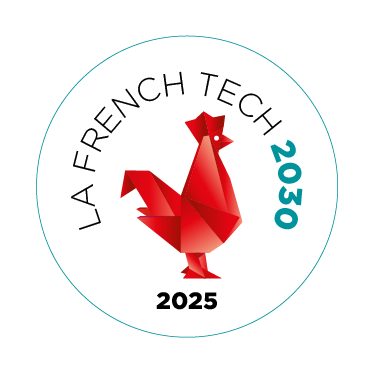The customer
AVEC designs and manufactures molded pulp packaging solutions for industrial and transport markets, offering an innovative, sustainable alternative to traditional protective packaging.
The customer problem
AVEC was facing two major constraints on its production line: unloading parts from the forming machine and managing the drying step.
Both unloading and quality checks were performed manually by a dedicated operator. This task required constant monitoring of the forming basin, which is difficult to maintain over long periods. The repetitive and monotonous nature of the job sometimes led to basin overflows and unexpected machine stops.
Batch drying also caused interruptions in production flow and resulted in quality inconsistencies.
Customer objectives:
• Increase productivity by eliminating machine downtime
• Improve drying consistency and quality control
• Reduce the strain of repetitive manual tasks
Our Solution
Deploy Robotics, Niryo’s integration brand, automated the part unloading phase using a Ned3Pro robot equipped with pneumatic fingers to handle molded pulp pieces gently without deforming them.
Inline quality checks were implemented to ensure part conformity, including geometry, weight, and residual moisture.
The solution was engineered from the start to provide the flexibility the customer needed:
• Interchangeable geometry-check fixtures, easily swapped by operators
• Modular programming that can be adapted from one series to another
• A future-proof setup ready for continuous drying, without changing the current workflow
An evolving system designed to grow with the customer’s products and their customers’ needs.
Customer specifications
The project included :

Process
• A Ned3Pro extracts each part from the forming machine, weighs it, performs a shaping correction, then places it into the drying process
• After drying, a second Ned3Pro weighs the part again and performs a geometry check before storage
Technical constraints
• Wide variety of part shapes and dimensions
• Very soft, irregular material saturated with water requiring careful handling
• Automation must remain cost-efficient even for small production batches
Scalability
As a manufacturer of both molded parts and production equipment, the customer needed a solution that could be easily adapted and reproduced for its own customers:
• Modular cell architecture and block-based programming with Niryo Studio
• Straightforward adjustments to support future production evolution
Our support for the customer
We managed the full integration of the system within the customer’s production environment. Our team conducted the design study, integrated the robots with the existing forming machine, and deployed the quality-control tools.
Once installed, we assisted the customer on the shop floor through start-up and operational validation. We also trained operators on handling and calibration, and supported technical teams in programming with NiryoStudio.
Our goal was clear: ensure total autonomy in changeovers and positioning adjustments while guaranteeing long-term performance and reliability.
The associated ROI
The automation eliminated a full-time manual unloading role. The operator is now a line supervisor, ensuring continuous production flow without machine stoppages.
Both productivity and end-product quality have seen clear improvements.
Before and after Automation
Before
- Full-time operator on repetitive, manual unloading
- Frequent line interruptions
- Handling issues requiring rework or re-molding
- Batch drying variability
After
- Continuous production with fully automated unloading and inspections
- Stable cycle time with uninterrupted flow
- Consistent first-time quality with weight and geometry checks
- Uniform, repeatable drying results
A word from the customer
“This project allows us to shift operators toward high-value tasks: quality control, process monitoring, and maintenance. We are also building skills in automation and robotics, which are essential to improve our high-throughput production.
We really appreciated the collaboration with the Deploy Robotics team. Clear communication and a solid understanding of our constraints led to a reliable solution that was well-received internally.”
— Jon Bidart, Head of Engineering – AVEC















